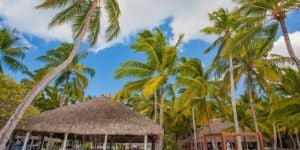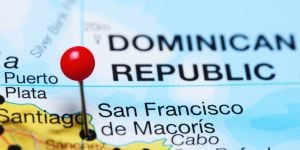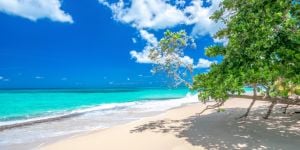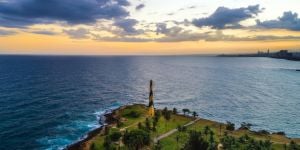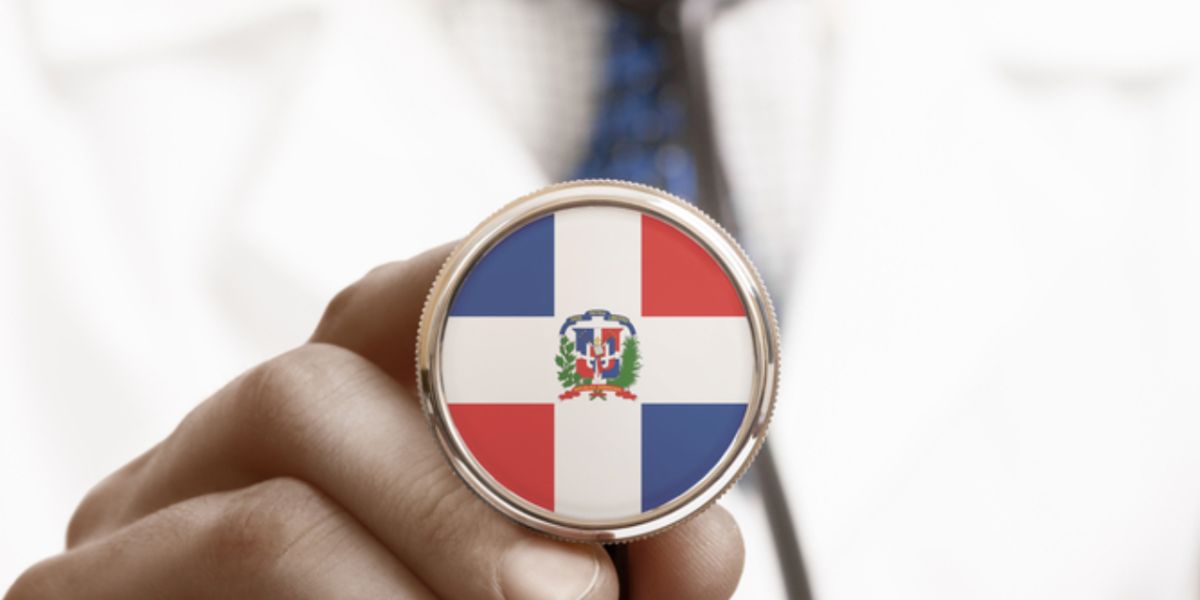
If you are looking for a job in San Pedro de Macoris, here are some tips on its economy and labor market to guide you.
San Pedro de Macoris, one of the Dominican Republic's major cities, is very welcoming toward foreigners. Thanks to its pleasant environment, it attracts tourists in large numbers every year.
The city also provides job prospects for qualified foreigners wishing to settle there and enjoy its developed and dynamic economy. Hence, finding a job there should not be a significant issue, provided you have the right profile, and you are aware of the labor market's requirements and working conditions.
San Pedro de Macoris has a population of 266,629 people who reside in and around the city.
San Pedro de Macoris' economy
San Pedro de Macoris enjoys a diversified economy. In fact, various fields, such as tourism, agriculture, industry, trade, and distillation, make an essential contribution to its economy, not to mention higher education. Indeed, the country hosts many places of interest and numerous leisure activities that attract tourists, especially in Guayacanes and Juan Dolio. In short, San Pedro de Macoris is described as being a vibrant and colorful city.
Agriculture mainly focuses on the cultivation of sugar cane and citrus, as well as cattle breeding. You will also find many sugar mills and distillation plants across the city. Moreover, San Pedro de Macoris has its own free zone, the Zona Franca Industrial, which has attracted many international companies.
Finally, East Central University and the School of Medicine not only attract local and international students but also provide employment opportunities for professionals.
The job market of San Pedro de Macoris
The province of San Pedro de Macoris has a total of 545 businesses. Among the province's key economic activities are:
- Trading (31,9% and 174 companies);
- Service and telecommunication (17,6% and 96 companies);
- Tourism/gastronomy/leisure industry (12,5% and 68 companies);
- Factories and mining (11,7% and 64 companies);
- Teaching (10,3% and 56 companies);
- Real estate (8,8% and 48 companies);
- Construction (3,5% and 19 companies);
- Agriculture and fishing (1,8% and 10 companies);
- Public administration (0,9% and 5 companies);
- Transport and storage (0,9% and 5 companies).
An interesting fact about the tourism industry: In San Pedro de Macoris, you can find 28 hotels (and 2420 rooms).
There are 47 foreign companies, including those from Canada, South Korea, Spain, the United States of America, Holland, France, Italy, Venezuela, Panama, and Turkey, that operate in the Dominican Republic in San Pedro de Macoris.
The factories and companies are dedicated to manufacturing textiles, tobacco, alcoholic beverages, pharmaceutical products, medicine, medical instruments and equipment, agro-industrial products, electronics, jewelry, and many more.
So, as you can see, many different industries offer a possible chance for you to find a job. Depending on your personal interests and abilities, as well as work experience, language knowledge, and some other factors such as certifications and expertise, you have a pretty decent range to choose from.
Finding a job in San Pedro de Macoris
It is best to be on the spot to have more chances of being hired in San Pedro de Macoris. However, you must have sufficient funds to support yourself for at least 6 months in the country. You can start your job search by contacting companies operating in the free zone and sending spontaneous job applications. Note that a good command of Spanish will definitely be an asset during your interview.
You can also view job offers on general and specialized job websites, as well as on professional social networks on the Internet by typing "buscar empleo en San Pedro de Macoris" on your search engine. This will give you a better idea of the local labor market's requirements and working conditions beforehand.
Good to know:
Suppose you are determined to work in San Pedro de Macoris. In that case, you are advised to set aside your expectations as wages can be relatively lower, and working conditions may be very different from what you are used to. Nevertheless, your expertise will be much appreciated.
Interesting facts for expats about San Pedro de Macoris
Cost of living
It is still a bit cheaper than the country's capital, Santo Domingo, and many other places in the world. Here's a list of the most common expenses that you have to keep in mind when moving to San Pedro de Macoris:
- Beer: 2,17 USD for a 0,5-liter bottle in the store;
- Wine: 11 USD for a bottle in a supermarket;
- Cigarettes: 3,7 USD per pack;
- Full meal: 5 USD in an inexpensive restaurant;
- Taxi cost: 3 USD for 1 kilometer;
- Rent: 450 USD for a 2- to 3-bedroom apartment;
- Internet: 50 USD for fiber, more than 60Mbps;
- Electricity: $50 USD, depending on the consumption.
Currently, 1 USD is about $58,62 Dominican Pesos, but this can change on a daily basis, so you have to check it on sites like oanda.com.
The general internet speed is acceptable at a rate of 26.2Mbps. San Pedro de Macoris, Dominican Republic, has a monthly cost of living of around 1698 USD.
Throughout the year, the weather in San Pedro de Macoris, Dominican Republic, may range between a low of 23.96°C and a high of 31.92°C. In San Pedro de Macoris, Dominican Republic, the average daily precipitation is 1.82 mm yearly.
The time zone in San Pedro de Macoris, Dominican Republic is GMT–4. Because San Pedro de Macoris, Dominican Republic, does not follow daylight saving time, you will not need to change your clocks.
Reasons why San Pedro de Macoris is a fantastic place
San Pedro de Macoris is a municipality in the same province, about an hour and a half from Punta Cana and about an hour and a half from Santo Domingo, the Dominican Republic's capital. The Caribbean's warmth and climate always make a visit to this region enjoyable. The average annual temperature of Macoris is 26 degrees Celsius, and rains are periodic and brief. The dry season starts in March, the rainy season begins in September, and the warmest and coolest weeks are in August and January, however.
San Pedro de Macoris is located directly on the coast, and there are several beautiful beaches in the surrounding region. Visit Juan Dolio's beach. Alternatively, you may visit one of the surrounding beaches.
Its past can still be found in its streets, traditions, and residents. San Pedro de Macoris' cultural legacy permits it to be among the remaining Dominican areas where the traditional Antillean momise dances, referred to as "guloyas", may still be witnessed. Its roots can be traced back to the period of the cocolos, Anglophone Caribbean immigrants from the British Virgin Islands who settled in San Pedro de Macoris. The characters in this African dance are disguised, and the stories recounted are frequently based on Bible lessons or British folklore. In actuality, there are three sorts of dances: the wild dance, in which the guloyas travel throughout the city, and the "El Codril" dance.
To immerse oneself in nature, there is nothing like visiting the Laguna de Mallén, a wildlife refuge turned into a wild animal park and safari. It is one of the most spectacular spots in San Pedro de Macoris because of the large number of birds that live there and cannot be seen anywhere else in the Eastern region. It stretches for more than 8 kilometers and is the area's largest protected area. The rangers dwell on Isla de la Mujer, a tiny island in the midst of the lagoon. It is an eco-tourist destination that will leave you with unforgettable memories.
While the North of the Dominican Republic is a little cheaper than San Pedro de Macoris, you'll find fantastic value here, and the living costs are still pretty affordable.
Downsides of San Pedro de Macoris
Like any other place in the world, you will also find some things that you may dislike in San Pedro de Macoris. Luckily for you, we did not find that many.
One of the city's concerns is the energy problem, which implies that there is not enough power supply for all the city inhabitants. An additional issue is the crime rate. At the same time, residents of San Pedro may not feel comfortable due to the presence of crooks in the city, and it is not a massive issue as compared to other parts of the Dominican Republic and other Latin American countries. Those two factors (energy supply difficulties and crime) are the city's primary concerns.
Dating in San Pedro de Macoris
If you are single and want to get to know your better half, you have more options than just going to a coffee shop or hoping that faith will play its part. These are the best online dating websites and apps, according to locals, if you want to find a date in San Pedro de Macoris:
- Dominican Cupid: Every month, about 1000 people between the ages of 18 and 35 utilize Dominican Cupid in San Pedro de Macoris. That would mean a number of chances, mainly because there are not many fellow expats in town;
- Tinder: In San Pedro de Macoris, more people tend to use Tinder than in other small Dominican cities, so you might have a better chance at finding a suitable date for the night or even the love of your life;
- Latin American Cupid: If you are in San Pedro de Macoris for more than a few weeks, Latin American Cupid might be a good investment. Every month, more than 500 new users in the city browse through the site.
So, wherever you are trying your luck, let's hope you find what you are looking for and enjoy your time in San Pedro de Macoris apart from working!
The food scene in San Pedro de Macoris
One of the main reasons why people choose to live in a particular area is because they like the way of living it represents. This obviously consists of finding the right job, an adequate apartment, welcoming surroundings to spend your free time at, and, of course, the most amazing food!
San Pedro de Macoris' food is one of the reasons why your stay will be a treat. It shares characteristics with the national cuisine and adds its own ingredients inherited from immigrant groups from the British Isles as a result of its historical variety. The dompline, prepared with wheat flour and served with fish or salami, is one of the main courses, but the "Johnny Cake" is the true star. It is a flat maize flour bread that is served with longaniza, spaghetti, or an egg. Because fish is an essential part of their cuisine, there are several recipes that may be paired with guava berry, the region's traditional drink. It is a cocolo-derived liqueur prepared with rum.
Useful links:
We do our best to provide accurate and up to date information. However, if you have noticed any inaccuracies in this article, please let us know in the comments section below.

